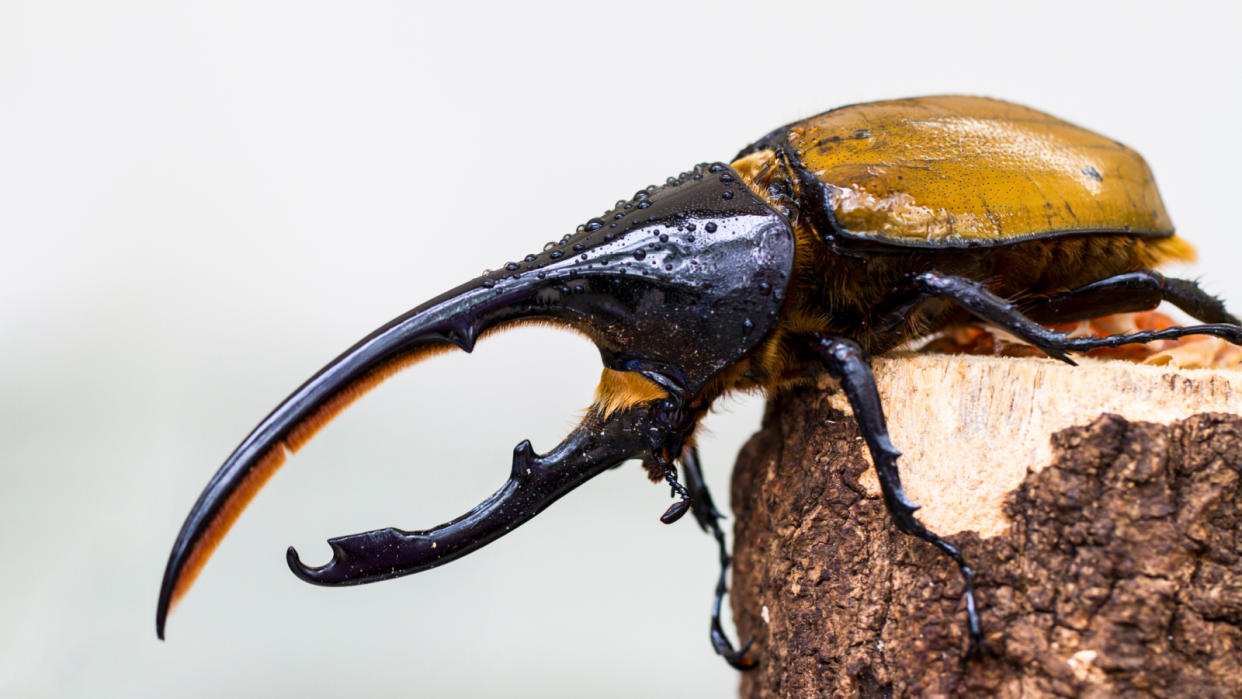Hercules beetle: The titan insect with giant horns for love and war

Name: Hercules beetle (Dynastes hercules)
Where it lives: Rainforests of Central and South America, plus a few Caribbean islands
What it eats: Rotting wood (as a larva), fruit and tree sap (as an adult)
Why it's awesome:
Hercules beetles are among the largest flying insects in the world, with males of some subspecies measuring up to 6.8 inches (17.2 centimeters) long. They are also extraordinarily strong and can lift objects hundreds of times their own weight, according to the American Museum of Natural History.
"The Demigod Hercules was famous for his strength, and the Hercules beetle can burrow its way out of hard ground and can lift surprisingly heavy objects," Max Barclay, curator of beetles, at the Natural History Museum in, London, told Live Science in an email. "It is well-named because you cannot easily contain a Hercules beetle in your hand without it forcing its way out."
Related: Beetles suck water into their butts to stay hydrated, and now scientists know how
Males sport magnificent horns, which they use to fight other males and impress females.
RELATED STORIES
—Gum leaf skeletonizer: The venomous 'Mad Hatterpillar' that wears its old heads like a crown
—Tortoise beetle larvae use their telescopic anuses to build shields from shed skin and poop
—When stressed, these male spiders woo mates with empty 'take-out containers' instead of dinner
"Males use the two horns together like a giant pair of tweezers to grasp each other and throw each other, the strongest usually winning the female," Barclay said. The Hercules beetle males are "making a sacrifice, by investing in cumbersome and otherwise unnecessary structures that make them vulnerable but also more attractive," Barclay added.
Females lay up to 100 eggs, which hatch after around 30 days. The larvae then go through three stages of metamorphosis, which lasts up to two years. They go from tiny eggs to hand-sized grubs, living underground and getting bigger and bigger. They then enter the pupa stage, where they encase themselves in a shell before breaking out as fully grown adults.
Like the adults, Hercules beetle larvae are huge. A 2018 video from Nat Geo WILD showed this incredible transformation in all its glory.

